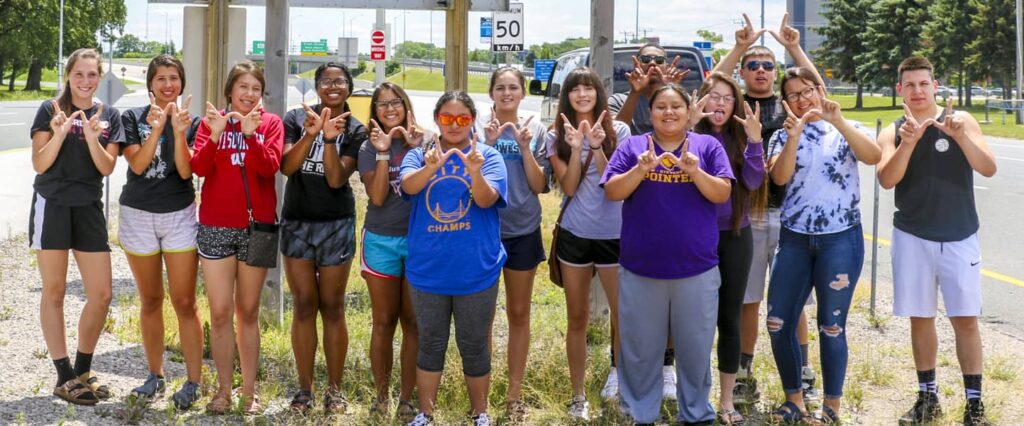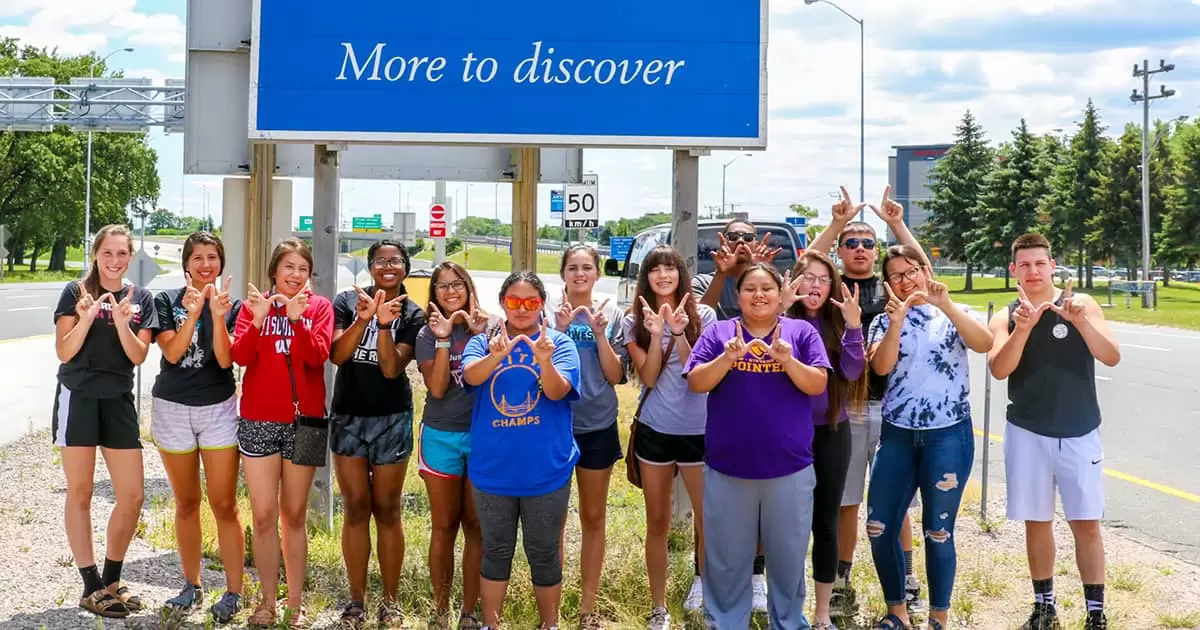
After a three-year hiatus, the North American Indigenous Games (NAIG) 2017 were once again the focus of Native American athletes across Canada and the United States as they joined in the competitions held July 15-23. This year was just as intense as previous years for athletes, coaches and parents as the sporting events were held in Toronto, Ontario, and were spread out across the city resulting in lots of travel time. Of course, everyone local who participated in NAIG did his/her absolute best to root on Team Wisconsin!
This is the largest sporting and cultural gathering of Indigenous Peoples in Northern America. It had more than 5,000 participants, 2,000 volunteers and numerous spectators, and included 14 different sport and game categories. Athletes ranged in age from 13-19, and they showed their athletic abilities throughout their individual events. Teams that took part traveled to the games from all 13 provinces and territories of Canada and from13 states in the United States. This was the 10th time the games had been held and, as mentioned, this happens every three years at different sites. It takes that long to just get it all organized with the different venues and players so it is quite an undertaking.
Athletes from both the Forest County Potawatomi (FCP) and Sokaogon Chippewa communities were the focus during this time in Canada. FCP had a total of 17 athletes and the Sokaogon Chippewa competed with six. Sports that were included for both communities were: basketball (male and female); athletics (track and field – male and female), volleyball (male and female), soccer, softball, swimming and wrestling.
To give those who are not familiar with this event an idea of what it is like, probably the closest thing to compare it to is the Olympics, but for Indigenous youth. As with the Olympics, the NAIG kicks off with an opening ceremony that was described by those in attendance as beautiful, moving, and inspirational. The games then lasted all week with very intense scheduling. PTT awoke at 5-6 a.m. and kept trucking until about 11-12 at night. This was not a slow-paced event and it seemed there was something happening all the time.
Team Wisconsin is always one of the main competitors out of the teams that attend from the United States, and they bring with them one of the largest fan bases outside of Canada. They ranked in 6th place out of all provinces and states involved and their awards included 16 gold medals, 18 silver, and 23 bronze for a total of 57 medals altogether.
One HUGE win was when Team Wisconsin took gold in wrestling. Not only did they take first place, but they were also honored in receiving the Todd Diabo trophy. This trophy is in honor of Todd Diabo, a former KSS Wrestling team captain who was struck down in an automobile accident in 1993 just prior to his team heading out to the 1993 NAIG in Prince Albert. Diabo was a GMAA Champion and a provincial champion. He was also one of the last holdout warriors to leave the treatment center during the 1990 Oka crisis. This was a land dispute between a group of Mohawk people and the town of Oka, Quebec, Canada, which began on July 11, 1990, and lasted 78 days until Sept. 26, 1990, with one fatality. The dispute was the first well-publicized violent conflict between First Nations and the Canadian government in the late 20th century. (Cited https://en.wikipedia.org/wiki/Oka_Crisis.) The Todd Diabo Memorial Trophy is the oldest awarded at the NAIG.
Another team that took home the gold was the 14U girls basketball team which was a phenomenal sight to see as well.
The athletes and their respective sports are as follows:
Forest County Potawatomi
- Aaleyah Alloway: 16U Volleyball
- Ryon Alloway: 19U Athletics: Discus, Javelin, Shot-Put (Bronze medal)
- Bethany Baldwin: 19U Basketball (Bronze medal)
- Darlaina Boyd: 19U Volleyball
- John Crawford: 19U Wrestling (Gold medal for team; Silver medal in 138.9 weight class)
- Micasslyn Crawford: 16U Basketball (Bronze medal)
- Bishbeneshikwe Daniels: 19U Athletics: Discus, Javelin, Shot-Put (Bronze medal in Discus)
- Jaiden Deschinny: 14U Athletics: 1200m, 2K X Country, 4x400m Relay, 800m
- LaVara Gilpin: 14U Basketball (Gold medal)
- Presley Keeble: 19U Basketball (Bronze medal)
- Tressa Lange: 19U Basketball (Bronze medal)
- Kaitlyn McGeshick: 16U Athletics: 100m, 200m, 300m, 4x100m relay (Bronze medal), long jump, triple jump (Bronze medal)
- Samantha Menomin: 19U Soccer
- Cody Sardin: 16U Basketball (Silver medal)
- Anike Sulaimon: 19U Basketball (Bronze medal)
- Malakhi VanZile: 14U Basketball (Bronze medal)
- Makenna Winnicki: 16U Swimming: 100m backstroke, 100m butterfly, 200m backstroke, 200m butterfly (Bronze medal), 200m individual medley, 4x100m freestyle relay (Silver medal), 4x50m freestyle relay (Bronze medal), 4x50m medley relay (Bronze medal), 800m freestyle (Silver medal).

